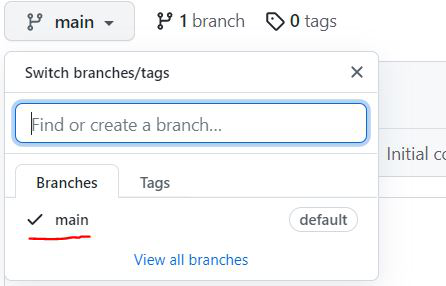Git is a popular version control system used by developers to manage and track changes in their code. Among the many concepts in Git, git origin master is fundamental, especially for those who are new to Git or looking to understand best practices for managing repositories. In this article, we’ll break down what git origin master means, how to use it, and why it’s important for your development workflow.
What is git origin master?
In Git, origin and master are two critical terms that you'll encounter frequently:
- Origin: This is the default name given to the remote repository from which you cloned your local repository. It acts as a shorthand reference for the URL of your remote repository.
- Master: This is the default name for the main branch in your repository. In many projects, this branch contains the stable and production-ready version of the code.
Git - Origin
Let's see how Origin and Master are used in Git projects. Origin in simple words means from where something is originated or derived.
- Origin is simply the name given to any remote repository available on GitHub.
- Whenever we need to push the changes to a remote repository, we use git push along with the remote repository "origin" and "master" branches. The term used is "git push origin master".
- To pull the changes from the remote repository to local, we use git pull along with remote repository "origin" and "master" branch. The term used is "git pull origin master".
When cloning the remote repository to local, we use "git clone" command and pass the URL for the remote repository as below

The "git remote" command is used to show the remotes mapped to git remote repository

Git remote -v: Shows all the remote connections linked to a git repository. It shows fetch and push operations on a remote repository as below

Git - Master
Master is the name of a default branch in git terminology. Whenever a new repository is created in git, git gives the default name to a branch as 'Master'.
- When a new repository is initialized using "git init" command, git creates a single branch by default such as the "Master" branch.
- When multiple developers collaborate on a single feature/development work, developers create a pull request to merge the changes to master branch. After the review is done by the senior developer, changes are merged to the master branch.
- The Master branch is the most up-to-date branch and has production-ready code.
Now, let's initialize a new git repository using the "git init" command as follows:

Now run the "Git Branch" command and check that we have a single branch in a remote repository which is 'main' or 'master' branch as below:

Check the Github page and see that there is the only branch, i.e the main branch as below depicted as follows:

Origin/Main in Git
Since Origin and Master are two different terminologies in Git but we might get confused when we see Origin/master in git context
- Origin/master is a remote-tracking branch.
- This branch exists in our local and tracks the remote repository 'origin' and branch 'master'.
- Branch in format "remote-name/remote-branch-name" is a remote-tracking branch
Since origin/master is a branch. Below is the process to merge the origin/master to master branch on remote origin
Step 1: Fetch the remote branch 'master' from remote 'origin'. Master branch would be fetched to local and local copy would be called as origin/master
git fetch origin master
Step 2: Then merge the 'origin/master' to 'master'
git merge origin/master
Step 3: Finally, now push the changes from remote branch 'master' to remote 'origin'
git push origin master
Best Practices for Using git origin master
- Keep
master Stable: Ensure that the master branch always contains stable and production-ready code. - Regular Pulls: Frequently pull changes from
origin master to keep your local repository up-to-date. - Use Branches: Work on features and fixes in separate branches, and merge them into
master only when they’re ready.
Similar Reads
What is "origin" in Git? When working with Git, especially in collaboration with others, you will often encounter the term "origin." Understanding what "origin" means and how it functions within Git’s workflow is important for effective source code management. In this article, we will walk you through everything you need to
4 min read
Git Tutorial Git is an essential tool for developers, enabling them to manage and track project changes. Whether you're working on a solo project or collaborating with a team, Git keeps everything organized and under control. This Git Tutorial, from beginner to advanced, will give you a complete understanding of
12 min read
Working With Git Repositories Git is a powerful and widely-used version control system that helps developers manage their codebases efficiently. By using Git repositories, developers can track changes, collaborate with others, and maintain a history of their project’s development. In this article, we will learn about working wit
7 min read
Git Security Model Git is one of the most popular version control systems, used by developers and non-developers for tracking changes, collaborating on projects, and managing codebases. While Git is popular for its efficiency in handling version control, its security features are equally robust, ensuring that your cod
7 min read
How to Login to Git? Git is a popular version control system used by developers to manage code and collaborate on projects. To fully utilize Git’s features, you need to log in, which involves setting up authentication with a Git hosting service like GitHub, GitLab, or Bitbucket. In this article, we’ll guide you through
3 min read